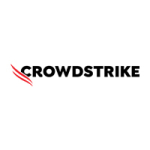Check Point CloudGuard WAF can be used in various scenarios, including on-premises and cloud deployments. It integrates well with other platforms like Fortinet and can be managed through a centralized console. It is suitable for multi-cloud environments, including Google Cloud Platform and Azure. Additionally, Check Point AppSec can be used alongside CloudGuard WAF for comprehensive application security.
The most effective CloudGuard feature for threat prevention is its web app protection.
CloudGuard could improve in areas such as ease of integration with Fortinet and reducing costs associated with deployment in cloud environments like Azure. Simplifying the implementation process and offering more cost-effective solutions could make it more competitive and easier for clients to adopt.
I have been working with Check Point CloudGuard WAF for two years.
CloudGuard is stable, with minimal interruptions to service. In the event of interruptions, there is a data center alternative within CloudGuard. On a scale of one to ten, I would rate its stability as a solid nine out of ten.
It is easy to scale up CloudGuard as needed, and the licensing is based on traffic rather than the number of URLs. This means that clients only need to license the solution based on their traffic requirements, regardless of the number of applications they have deployed. I would rate the scalability as an eight out of ten.
Check Point offers strong customer service and technical support. While I interact with account managers for negotiations and collaborate with Check Point engineers during projects, the dedicated customer service team ensures a positive experience. Overall, I would rate the support as an eight out of ten.
The initial setup of CloudGuard is somewhat straightforward, but it involves creating virtual machines, which can add complexity and cost, especially in cloud environments like Azure. Clients should carefully consider recommendations and costs associated with CloudGuard and compare them with alternatives like Fortinet to make informed decisions.
Deployment of Check Point CloudGuard typically requires a small team, often consisting of around two to three staff members from cybersecurity departments or Check Point Harmony solution teams.
For maintenance of Check Point CloudGuard, typically one or two people are required to ensure the solution functions properly, including updating applications and managing access.
The auto-generation of WAF rules has positively impacted our security posture by efficiently identifying and mitigating threats. In cloud security, it may reduce delays in detecting and responding to security incidents. By checking the security posture of clients' websites, we can assess cybersecurity risks, such as those specific to certain industries, improving overall security awareness and readiness.
The deep API protection provided by CloudGuard has several benefits, such as comparing API calls to updates in cybersecurity groups and enhancing security for web applications and APIs. An example of CloudGuard's effectiveness is when protecting cloud-based RP systems or electronic invoice applications. In these cases, CloudGuard secures the cloud environment, including databases, against malware, encrypts applications, and provides overall application protection.
CloudGuard integrates well with existing cloud security tools and management systems, making it easy to implement and manage.
I would recommend CloudGuard to others, especially for organizations heavily reliant on cloud infrastructure and applications. It provides comprehensive security coverage, including WAF, which is essential for safeguarding applications in the cloud. I often suggest CloudGuard to clients to enhance their cybersecurity posture and mitigate risks effectively.
Overall, I would rate Check Point CloudGuard WAF as an eight out of ten.


















